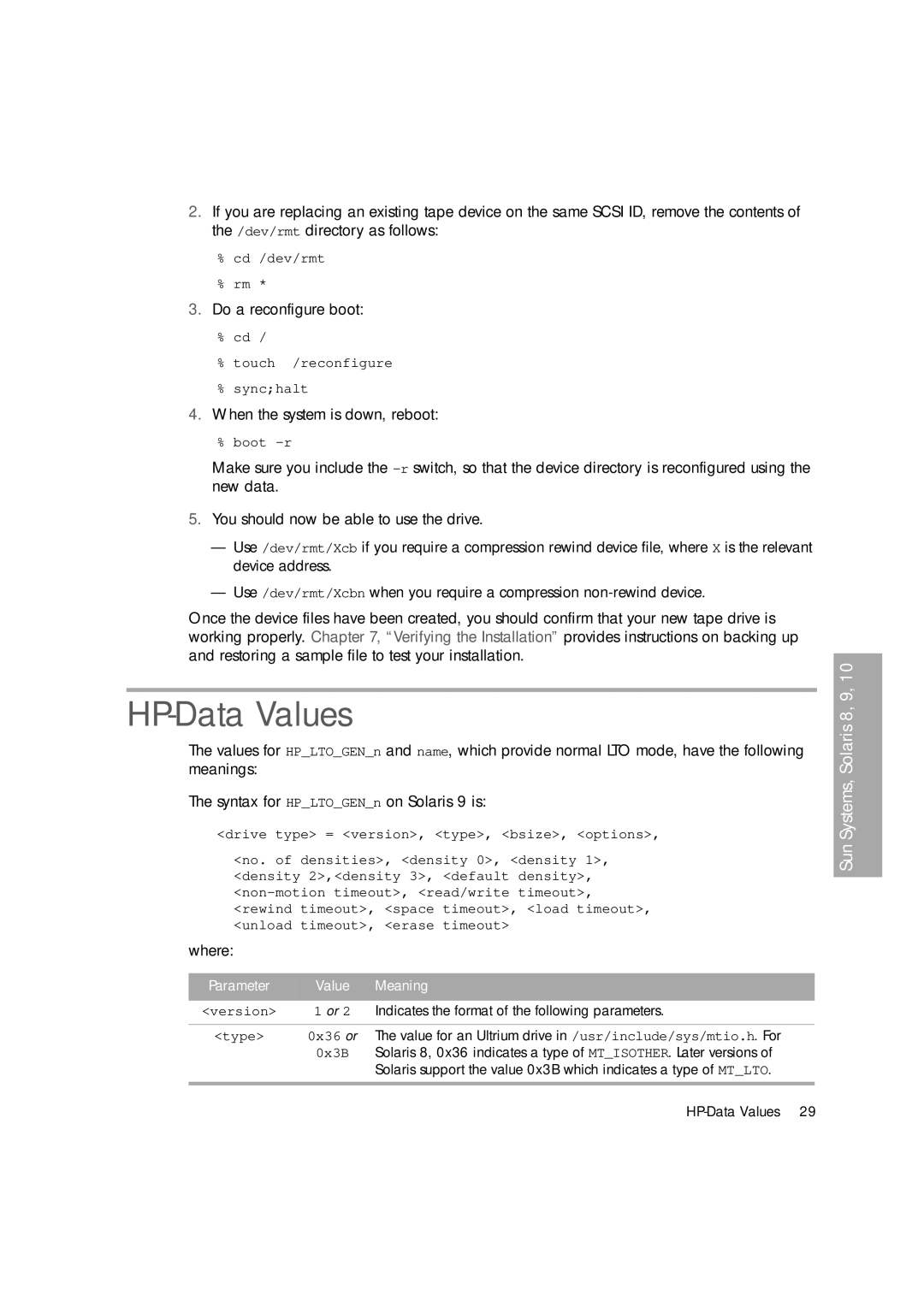
2.If you are replacing an existing tape device on the same SCSI ID, remove the contents of the /dev/rmt directory as follows:
%cd /dev/rmt
%rm *
3.Do a reconfigure boot:
%cd /
%touch /reconfigure
%sync;halt
4.When the system is down, reboot:
%boot
Make sure you include the
5.You should now be able to use the drive.
—Use /dev/rmt/Xcb if you require a compression rewind device file, where X is the relevant device address.
—Use /dev/rmt/Xcbn when you require a compression
Once the device files have been created, you should confirm that your new tape drive is working properly. Chapter 7, “Verifying the Installation” provides instructions on backing up and restoring a sample file to test your installation.
HP-Data Values
The values for HP_LTO_GEN_n and name, which provide normal LTO mode, have the following meanings:
The syntax for HP_LTO_GEN_n on Solaris 9 is:
<drive type> = <version>, <type>, <bsize>, <options>,
<no. of densities>, <density 0>, <density 1>, <density 2>,<density 3>, <default density>,
where:
Parameter | Value | Meaning |
|
|
|
<version> | 1 or 2 | Indicates the format of the following parameters. |
|
|
|
<type> | 0x36 or | The value for an Ultrium drive in /usr/include/sys/mtio.h. For |
| 0x3B | Solaris 8, 0x36 indicates a type of MT_ISOTHER. Later versions of |
|
| Solaris support the value 0x3B which indicates a type of MT_LTO. |
|
|
|
